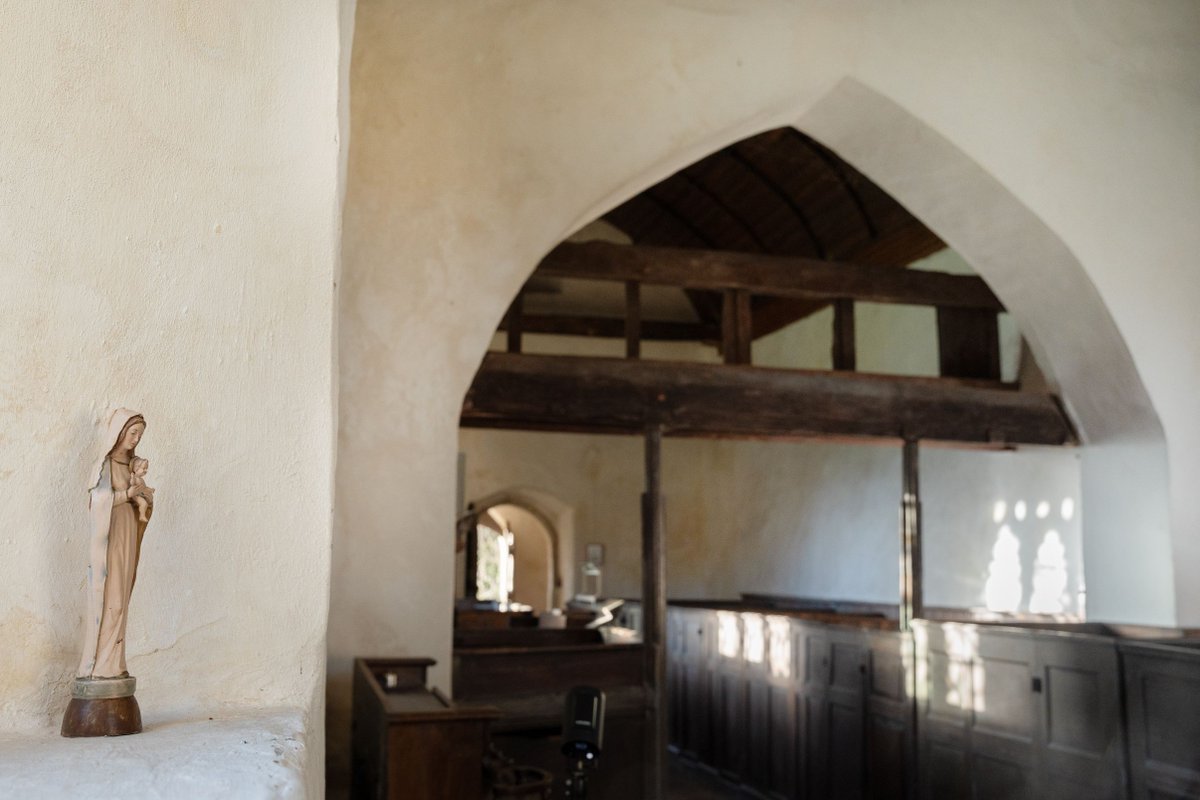Deep in the Black Mountains is an ancient oval churchyard. It encloses a church that has clung to the mountain for over 800 yrs. Homeless headstones form a jagged line-up outside. A sundial has told the time since 1686. Inside, an oxblood rood screen survives against the odds.
1/
1/

This veranda-style screen dominates the interior. It was carved in the 14th century and painted with an ox’s blood. The red background is peppered with stencilled white roses.
2/
2/

In the centre, a cross is picked out in bare wood. It’s the ghostly reminder of the crucifix that was lost from here during the Reformation.
3/
3/

The screen is supported by six moulded legs. Originally, these would have been enclosed with panelling to create two small side altars.
On the eastern face of the screen, facing the altar, is a beam, from which was hung the Lenten veil.
4/
On the eastern face of the screen, facing the altar, is a beam, from which was hung the Lenten veil.
4/

You’ll find all this, and more, at St Ellyw’s, Llanelieu, Powys.
📍friendsoffriendlesschurches.org.uk/llanelieu/
5/
📍friendsoffriendlesschurches.org.uk/llanelieu/
5/

This mini thread was inspired by @johnevigar - one of our trustees who gave *such* an interesting talk on rood screens on Tuesday evening.
He’s repeating it in May, if you’d like to join - denman.org.uk/whats-on/lifes…



He’s repeating it in May, if you’d like to join - denman.org.uk/whats-on/lifes…




• • •
Missing some Tweet in this thread? You can try to
force a refresh






















